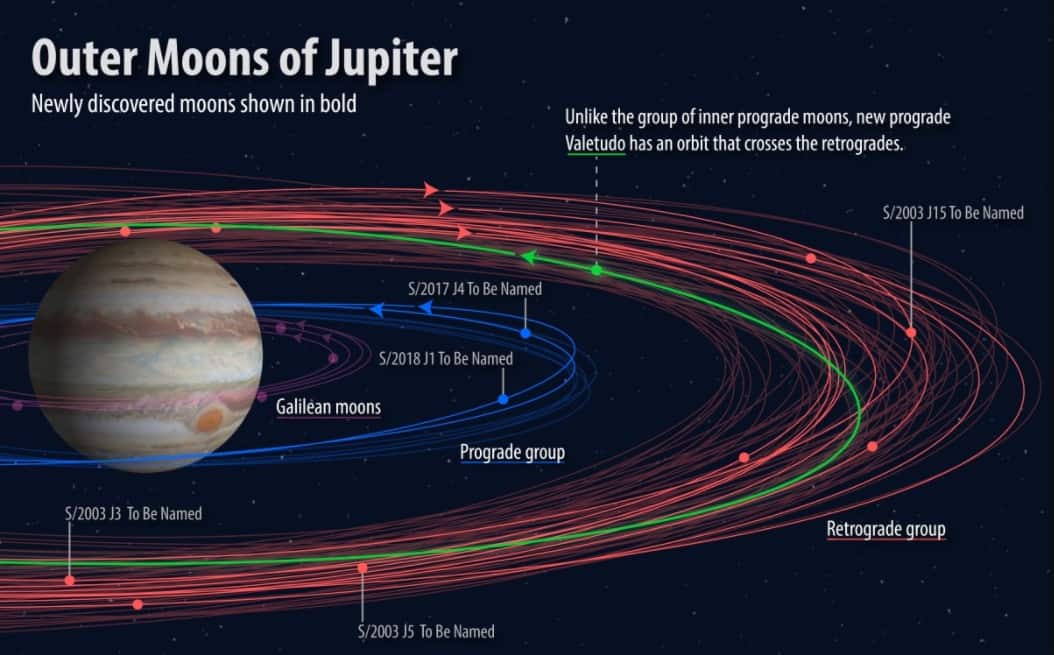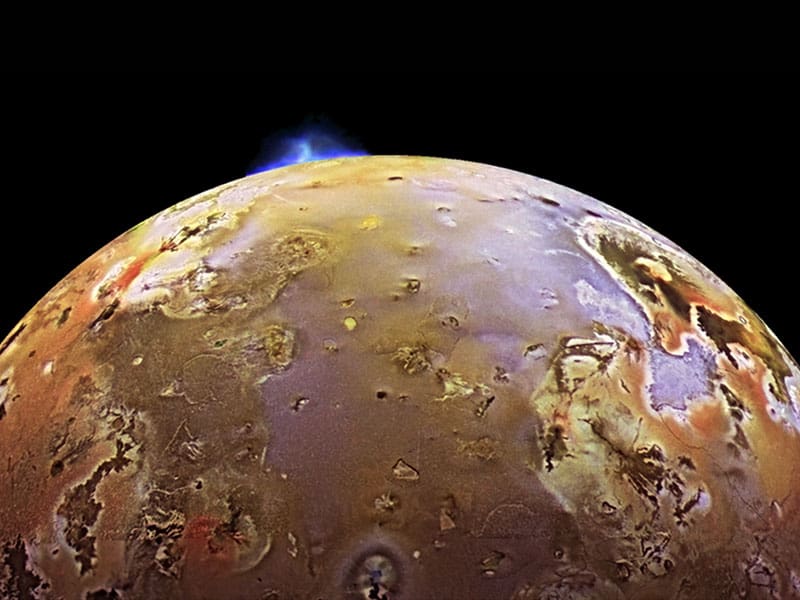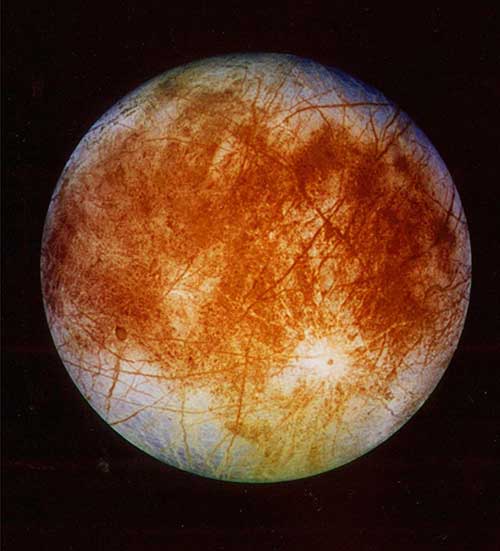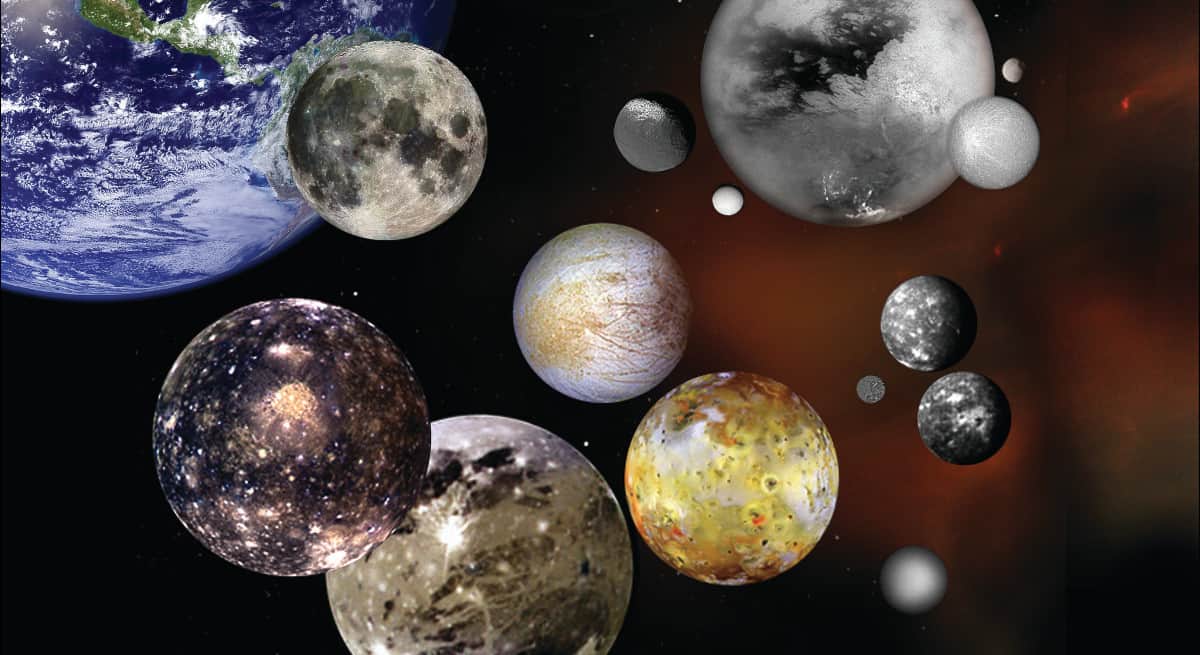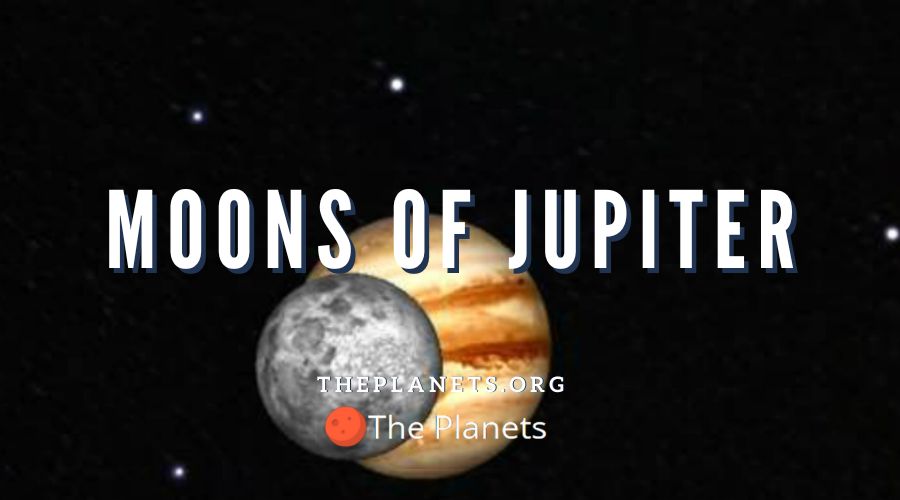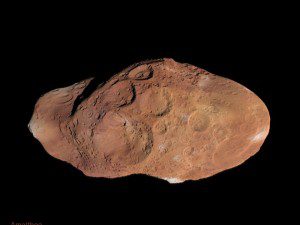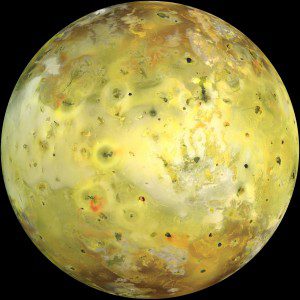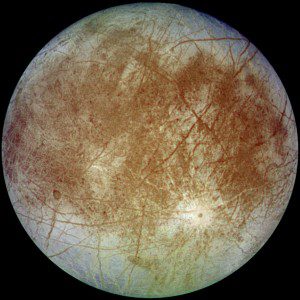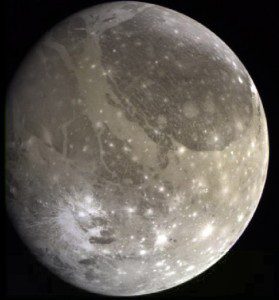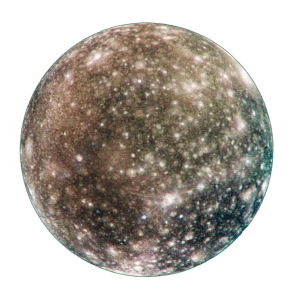How many moons does jupiter have
How many moons does jupiter have
How Many Moons Does Jupiter Have?
But what about the gas giants? How many moons does Jupiter have? Since 2020, Jupiter has 79 confirmed moons orbiting it. The four most famous moons, the Galilean Moons, are among the biggest moons in the Solar System.
Many missions are planned for Jupiter in the following years, and many of them target the four biggest moons of Jupiter, the Galilean Moons. So, let’s talk a bit about Jupiter’s moons. Let us see why they are sometimes even more eye-catching than Jupiter himself, and why scientists consider them valuable enough to send new spacecraft to analyze them.
The Galilean Moons
Io is the innermost and third-largest of the four Galilean moons. It is also the fourth-largest moon in the Solar System, yet it has the highest density and the least amount of water molecules of any known celestial object in the Solar System.
This giant moon is the most geologically active object in the Solar System, with over 400 active volcanoes on its surface. This geological activity is due to the tidal heating caused by friction. The friction is caused by the pull between Jupiter and the other larger moons.
Io is tidally locked to Jupiter, and it orbits its parent planet in 1.77 Earth-days. Io is larger than our Moon, having a mean radius of 1,131 mi / 1,821 km.
Io’s volcanoes produce plumes that reach 500 km / 300 mi above the surface. This moon is mainly made of silicate rock surrounding a molten iron core.
Ganymede
Ganymede is the largest moon of Jupiter, and overall the largest moon in the Solar System. This moon is even bigger than the planet Mercury. Ganymede has a diameter of 5,268 km / 3,273 mi and a radius of 2,634 km / 1,636 mi.
Ganymede has the lowest inertia factor of any solid body in the Solar System. Outward from Jupiter, Ganymede is the seventh moon, and it completes one trip around its parent body in 7 days.
Ganymede is made out of equal amounts of silicate rock and water ice, having an iron-rich, liquid core, and an internal ocean that may contain more water than all the water on Earth combined.
Europa
Europa is the rockstar of Jupiter’s moons. It is the smallest Galilean moon and the sixth-largest moon in the Solar System. Smaller than our Moon, Europa has a diameter of 3,100 km / 1,900 mi, and its mostly made out of silicate rock, and it has a water-ice crust and probably an iron-nickel core.
Europa’s atmosphere is primarily made out of oxygen, and it has the smoothest surface of any known solid object. This moon has the highest rate of either having or developing life since it most likely has an underground water ocean.
Callisto
Callisto is the second-largest natural satellite of Jupiter and the third-largest moon in the Solar System. Callisto has a diameter of about 4,821 km / 2,995 mi, and a third of the mass of Mercury.
It is the least affected moon of Jupiter, in regards to the gas giant’s powerful magnetosphere. It’s possible that this moon may also host an underground ocean of liquid water, but further evidence is needed.
It has the lowest density of Jupiter’s moons, and its surface appears to be the oldest and most heavily cratered in the Solar System. Callisto has a thin atmosphere that is made out of molecular oxygen and carbon dioxide.
Many consider Callisto as the best option of establishing a base. This is because this moon is the least radiated out of the Galilean moon.
Other Moons of Jupiter
Though Jupiter has 79 moons, 63 of them are less than 10 km / 6.2 mi in diameter. Jupiter’s regular moons consist of the Galilean moons and an inner group of 4 small moons with diameters less than 200 km / 124 mi, and orbits with radii less than 200,000 km / 124,274 mi.
All of these moons have orbital inclinations of less than half a degree. The Galilean moons are believed to have formed together with Jupiter since they have nearly circular orbits near the plane of Jupiter’s equator.
The other moons of Jupiter are irregular moons. They are small and have elliptical and inclined orbits around their parent planet. Most of them are believed to be captured asteroids, and their exact number is impossible to establish.
Some of these asteroids may have crashed upon each other and resulted in smaller “moons.” The irregular moons of Jupiter are all believed to share a common origin; it is possible that they may have come from a bigger moon of Jupiter that was somehow destroyed. They may be the remains of a dwarf planet. Given Jupiter’s powerful gravity, it would easily capture dwarf planets as well. All the Galilean moons are, after all, bigger than the dwarf planets.
Many missions are programmed for Jupiter in the near future, and most of them will target its moons. It is possible we might learn more about the Jovian system, and we might even uncover other hidden moons in the system.
How many moons does Jupiter have?
JUPITER is by far the biggest planet in our solar system. In fact, it is 2.5 times the combined mass of all the other planets put together.
So it’s no surprise that the gas giant also has a lot of moons. Here’s all you need to know.
How many moons does Jupiter have?
Jupiter has 79 moons, 53 of which have been named and 26 which have no name.
The planet can support so many moons because its size and mass give it gravitational stability.
Jupiter also has the strongest magnetic field of all the planets in our solar system.
Plus, Jupiter has some moons orbiting in the opposite direction to the others, and so also in the opposite direction to Jupiter’s rotation.
Some of Jupiter’s moons are tiny, around 2km in diameter, such as Pandea, Dia, and Ersa.
Many of these were discovered as recently as 2017, using high-tech Earth telescopes.
Others were found much earlier, such as Pasiphae in 1908 and Lysethea in 1938.
What is Jupiter’s biggest moon?
Ganymede is Jupiter’s biggest moon.
It is the only moon in the solar system to have its own magnetic field.
They were the first to be found and are also the most scientifically interesting.
Although Ganymede is as big as Mercury, it is only half the density.
It is the most volcanically-active body in our solar system, and the only one other than Earth.
The moon Europa is one of the brightest in our solar system. Its surface is almost all water and ice, and it is thought to be the most likely planet other than Earth for life to exist.
Callisto is the most heavily cratered object in our solar system.
MOST READ IN SPACE AND ASTRONOMY
Why did NASA stop exploring the ocean?
What colour is Saturn?
Watch as Perseid Meteor Shower lights up the night sky in incredible display
Which planet has the most moons?
Jupiter was the planet with the most moons until 2019, when 20 new moons were found in orbit around Saturn.
These moons average five kilometres in diameter, and 17 of them orbit Saturn in the direction opposite to its rotation, and to the other moons.
Drops of Jupiter
Full list of all Jupiter’s moons:
Adrastea
Aitne
Amalthea
Ananke
Aoede
Arche
Autonoe
Callirrhoe
Callisto
Carme
Carpo
Chaldene
Cyllene
Dia
Eirene
Elara
Erinome
Ersa
Euanthe
Eukelade
Eupheme
Euporie
Europa
Eurydome
Ganymede
Harpalyke
Hegemone
Helike
Hermippe
Herse
Himalia
Io
Iocaste
Isonoe
Jupiter LI
Jupiter LII
Kale
Kallichore
Kalyke
Kore
Leda
Lysethea
Megaclyte
Metis
Mneme
Orthosie
Pandia
Pasiphae
Pasithee
Philophrosyne
Praxidike
S/2003 J10 12 16 18 19 2 4 23 9
S/2011 J1 and 2
S/2016 J1 and 2 (Valetudo)
S/2017 J1 2 3 5 6 7 8 9
Sinope
Sponde
Taygete
Thebe
Thelxinoe
Themisto
Thyone
More from The Sun
Ten Hag slams Man Utd flops who IGNORED team talk before Brentford humiliation
Jamie Redknapp and Gary Neville in FURIOUS Sky Sports bust-up over Man Utd loss
ALL TIME LOW
Stacey Giggs accuses ex Max George of cheating on her with Maisie Smith
Big Breakfast fans all have the same complaint as iconic show returns
Follow The Sun
Services
©News Group Newspapers Limited in England No. 679215 Registered office: 1 London Bridge Street, London, SE1 9GF. «The Sun», «Sun», «Sun Online» are registered trademarks or trade names of News Group Newspapers Limited. This service is provided on News Group Newspapers’ Limited’s Standard Terms and Conditions in accordance with our Privacy & Cookie Policy. To inquire about a licence to reproduce material, visit our Syndication site. View our online Press Pack. For other inquiries, Contact Us. To see all content on The Sun, please use the Site Map. The Sun website is regulated by the Independent Press Standards Organisation (IPSO)
Jupiter Moons
Overview Jupiter has 53 named moons. Others are awaiting official names. Combined, scientists now think Jupiter has 79 moons.
There are many interesting moons orbiting the planet, but the ones of most scientific interest are the first four moons discovered beyond Earth—the Galilean satellites.
The Galilean Moons
The Galilean Moons
The planet Jupiter’s four largest moons are called the Galilean satellites after Italian astronomer Galileo Galilei, who first observed them in 1610. The German astronomer Simon Marius claimed to have seen the moons around the same time, but he did not publish his observations and so Galileo is given the credit for their discovery. These large moons, named Io, Europa, Ganymede, and Callisto, are each distinctive worlds.
Io is the most volcanically active body in the solar system. Io’s surface is covered by sulfur in different colorful forms. As Io travels in its slightly elliptical orbit, Jupiter’s immense gravity causes «tides» in the solid surface that rise 300 feet (100 meters) high on Io, generating enough heat for volcanic activity and to drive off any water. Io’s volcanoes are driven by hot silicate magma.
Europa
Europa’s surface is mostly water ice, and there is evidence that it may be covering an ocean of water or slushy ice beneath. Europa is thought to have twice as much water as does Earth. This moon intrigues astrobiologists because of its potential for having a «habitable zone.» Life forms have been found thriving near subterranean volcanoes on Earth and in other extreme locations that may be analogues to what may exist on Europa.
Ganymede
Ganymede is the largest moon in the solar system (larger than the planet Mercury), and is the only moon known to have its own internally generated magnetic field.
Callisto
Callisto’s surface is extremely heavily cratered and ancient—a visible record of events from the early history of the solar system. However, the very few small craters on Callisto indicate a small degree of current surface activity.
Structure
The interiors of Io, Europa and Ganymede have a layered structure (as does Earth). Io has a core, and a mantle of at least partially molten rock, topped by a crust of solid rock coated with sulfur compounds. Europa and Ganymede both have a core; a rock envelope around the core; a thick, soft ice layer; and a thin crust of impure water ice. In the case of Europa, a global subsurface water layer probably lies just below the icy crust. Layering at Callisto is less well defined and appears to be mainly a mixture of ice and rock.
Moon Interactions
Three of the moons influence each other in an interesting way. Io is in a tug-of-war with Ganymede and Europa, and Europa’s orbital period (time to go around Jupiter once) is twice Io’s period, and Ganymede’s period is twice that of Europa. In other words, every time Ganymede goes around Jupiter once, Europa makes two orbits and Io makes four orbits. The moons all keep the same face towards Jupiter as they orbit, meaning that each moon turns once on its axis for every orbit around Jupiter.
Exploration
Pioneers 10 and 11 (1973 to 1974) and Voyager 1 and Voyager 2 (1979) offered striking color views and global perspectives from their flybys of the Jupiter system. From 1995 to 2003, the Galileo spacecraft made observations from repeated elliptical orbits around Jupiter, passing as low as 162 miles (261 kilometers) over the surfaces of the Galilean moons. These close approaches resulted in images with unprecedented detail of selected portions of the surfaces.
Close-up images taken by the Galileo spacecraft of portions of Europa’s surface show places where ice has broken up and moved apart, and where liquid may have come from below and frozen smoothly on the surface. The low number of craters on Europa leads scientists to believe that a subsurface ocean has been present in recent geologic history and may still exist today. The heat needed to melt the ice in a place so far from the Sun is thought to come from inside Europa, resulting primarily from the same type of tidal forces that drive Io’s volcanoes.
The next major mission to explore Jupiter’s moons is NASA’s Europa Clipper. Clipper will conduct detailed reconnaissance of Jupiter’s moon Europa to see whether the icy moon could harbor conditions suitable for life.
How Many Moons Does Jupiter Have?
Jupiter was appropriately named by the Romans, who chose to name it after the king of the gods. In addition to being the largest planet in our Solar System – with two and a half times the mass of all the other planets combined – it also has the most moons of any Solar planet. So far, 67 natural satellites have been discovered around the gas giant, and more could be on the way.
The moons of Jupiter are so numerous and so diverse that they are broken down into several groups. First, there are the largest moons known as the Galileans, or Main Group. Together with the smaller Inner Group, they make up Jupiter’s Regular Satellites. Beyond them, there are the many Irregular Satellites that circle the planet, along with its debris rings. Here’s what we know about them…
Discovery and Naming:
Using a telescope of his own design, which allowed for 20 x normal magnification, Galileo Galilei was able to make the first observations of celestial bodies that were not visible to the naked eye. In 1610, he made the first recorded discovery of moons orbiting Jupiter, which later came to be known as the Galilean Moons.
Remove All Ads on Universe Today
Get the ad-free experience for life
At the time, he observed only three objects, which he believed to be fixed stars. However, between January and March of 1610, he continued to observe them, and noted a fourth body as well. In time, he realized that these four bodies did not behave like fixed stars, and were in fact objects that orbited Jupiter.
These discoveries proved the importance of using the telescope to view celestial objects that had previously remained unseen. More importantly, by showing that planets other than Earth had their own system of satellites, Galileo dealt a significant blow to the Ptolemaic model of the universe, which was still widely accepted.
Seeking the patronage of the Grand Duke of Tuscany, Cosimo de Medici, Galileo initially sought permission to name the moons the “Cosmica Sidera” (or Cosimo’s Stars). At Cosimo’s suggestion, Galileo changed the name to Medicea Sidera (“the Medician stars”), honouring the Medici family. The discovery was announced in the Sidereus Nuncius (“Starry Messenger”), which was published in Venice in March 1610.
However, German astronomer Simon Marius had independently discovered these moons at the same time as Galileo. At the behest of Johannes Kepler, he named the moons after the lovers of Zues (the Greek equivalent of Jupiter). In his treatise titled Mundus Jovialis (“The World of Jupiter”, published in 1614) he named them Io, Europa, Ganymede, and Callisto.
Galileo steadfastly refused to use Marius’ names and instead invented the numbering scheme that is still used today, alongside proper moon names. In accordance with this scheme, moons are assigned numbers based on their proximity to their parent planet and increase with distance. Hence, the moons of Io, Europa, Ganymede and Callisto were designated as Jupiter I, II, III, and IV, respectively.
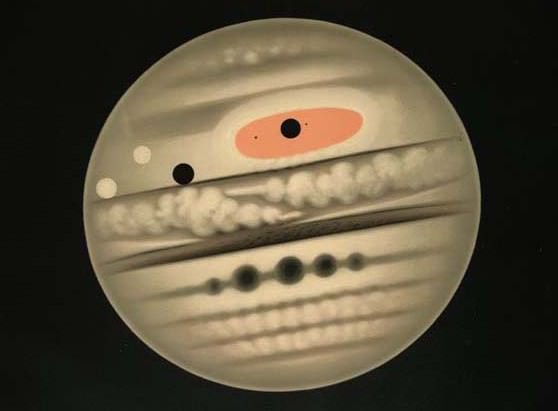
After Galileo made the first recorded discovery of the Main Group, no additional satellites were discovered for almost three centuries – not until E. E. Barnard observed Amalthea in 1892. In fact, it was not until the 20th century, and with the aid of telescopic photography and other refinements, that most of the Jovian satellites began to be discovered.
Himalia was discovered in 1904, Elara in 1905, Pasiphaë in 1908, Sinope in 1914, Lysithea and Carme in 1938, Ananke in 1951, and Leda in 1974. By the time Voyager space probes reached Jupiter around 1979, 13 moons had been discovered, while Voyager herself discovered an additional three – Metis, Adrastea, and Thebe.
Between October 1999 and February 2003, researchers using sensitive ground-based detectors found and later named another 34 moons, most of which were discovered by a team led by Scott S. Sheppard and David C. Jewitt. Since 2003, 16 additional moons have been discovered but not yet named, bringing the total number of known moons of Jupiter to 67.
Though the Galilean moons were named shortly after their discovery in 1610, the names of Io, Europa, Ganymede and Callisto fell out of favor until the 20th century. Amalthea (aka. Jupiter V) was not so named until an unofficial convention took place in 1892, a name that was first used by the French astronomer Camille Flammarion.
The other moons, in the majority of astronomical literature, were simply labeled by their Roman numeral (i.e. Jupiter IX) until the 1970s. This began in 1975 when the International Astronomical Union’s (IAU) Task Group for Outer Solar System Nomenclature granted names to satellites V–XIII, thus creating a formal naming process for any future satellites discovered. The practice was to name newly discovered moons of Jupiter after lovers and favorites of the god Jupiter (Zeus); and since 2004, also after their descendants.
Regular Satellites:
Jupiter’s Regular Satellites are so named because they have prograde orbits – i.e. they orbit in the same direction as the rotation of their planet. These orbits are also nearly circular and have a low inclination, meaning they orbit close to Jupiter’s equator. Of these, the Galilean Moons (aka. the Main Group) are the largest and the most well known.
These are Jupiter’s largest moons, not to mention the Solar System’s fourth, sixth, first and third largest satellites, respectively. They contain almost 99.999% of the total mass in orbit around Jupiter, and orbit between 400,000 and 2,000,000 km from the planet. They are also among the most massive objects in the Solar System with the exception of the Sun and the eight planets, with radii larger than any of the dwarf planets.
They include Io, Europa, Ganymede, and Callisto, and were all discovered by Galileo Galilei and named in his honor. The names of the moons, which are derived from the lovers of Zeus in Greek mythology, were prescribed by Simon Marius soon after Galileo discovered them in 1610. Of these, the innermost is Io, which is named after a priestess of Hera who became Zeus’ lover.
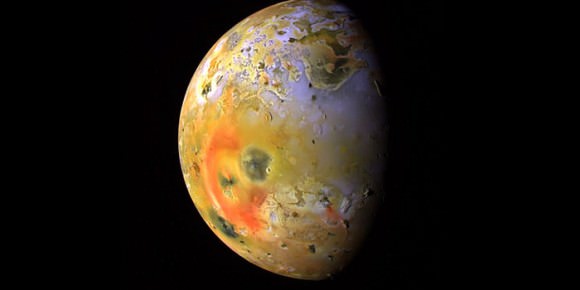
With a diameter of 3,642 kilometers, it is the fourth-largest moon in the Solar System. With over 400 active volcanoes, it is also the most geologically active object in the Solar System. Its surface is dotted with over 100 mountains, some of which are taller than Earth’s Mount Everest.
Unlike most satellites in the outer Solar System (which are covered with ice), Io is mainly composed of silicate rock surrounding a molten iron or iron sulfide core. Io has an extremely thin atmosphere made up mostly of sulfur dioxide (SO2).
The second innermost Galilean moon is Europa, which takes its name from the mythical Phoenician noblewoman who was courted by Zeus and became the queen of Crete. At 3121.6 kilometers in diameter, it is the smallest of the Galileans, and slightly smaller than the Moon.
Europa’s surface consists of a layer of water surrounding the mantle which is thought to be 100 kilometers thick. The uppermost section is solid ice while the bottom is believed to be liquid water, which is made warm due to heat energy and tidal flexing. If true, then it is possible that extraterrestrial life could exist within this subsurface ocean, perhaps near a series of deep-ocean hydrothermal vents.
The surface of Europa is also one of the smoothest in the Solar System, a fact which supports the idea of liquid water existing beneath the surface. The lack of craters on the surface is attributed to the surface being young and tectonically active. Europa is primarily made of silicate rock and likely has an iron core, and a tenuous atmosphere composed primarily of oxygen.
Next up is Ganymede. At 5262.4 kilometers in diameter, Ganymede is the largest moon in the Solar System. While it is larger than the planet Mercury, the fact that it is an icy world means that it has only half of Mercury’s mass. It is also the only satellite in the Solar System known to possess a magnetosphere, likely created through convection within the liquid iron core.
Ganymede is composed primarily of silicate rock and water ice, and a salt-water ocean is believed to exist nearly 200 km below Ganymede’s surface – though Europa remains the most likely candidate for this. Ganymede has a high number of craters, most of which are now covered in ice, and boasts a thin oxygen atmosphere that includes O, O2, and possibly O3 (ozone), and some atomic hydrogen.
Callisto is the fourth and farthest Galilean moon. At 4820.6 kilometers in diameter, it is also the second largest of the Galileans and third largest moon in the Solar System. Callisto is named after the daughter of the Arkadian King, Lykaon, and a hunting companion of the goddess Artemis.
Composed of approximately equal amounts of rock and ices, it is the least dense of the Galileans, and investigations have revealed that Callisto may also have an interior ocean at depths greater than 100 kilometers from the surface.
Callisto is also one of the most heavily cratered satellites in the Solar System – the greatest of which is the 3000 km wide basin known as Valhalla. It is surrounded by an extremely thin atmosphere composed of carbon dioxide and probably molecular oxygen. Callisto has long been considered the most suitable place for a human base for future exploration of the Jupiter system since it is furthest from the intense radiation of Jupiter.
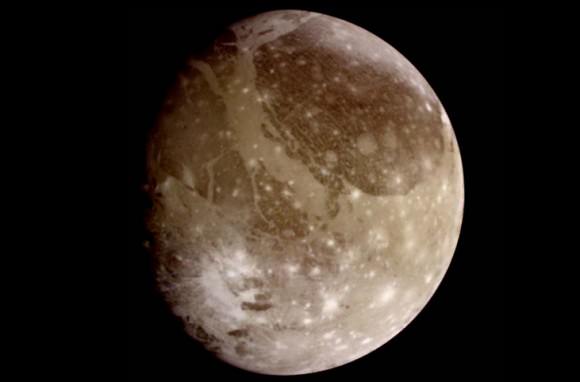
The Inner Group (or Amalthea group) are four small moons that have diameters of less than 200 km, orbit at radii less than 200,000 km, and have orbital inclinations of less than half a degree. This groups includes the moons of Metis, Adrastea, Amalthea, and Thebe.
Along with a number of as-yet-unseen inner moonlets, these moons replenish and maintain Jupiter’s faint ring system – Metis and Adrastea helping Jupiter’s main ring, while Amalthea and Thebe maintain their own faint outer rings.
Metis is the closest moon to Jupiter at a distance of 128,000 km. It is roughly 40 km in diameter, tidally-locked, and highly-asymmetrical in shape (with one of the diameters being almost twice as large as the smallest one). It was not discovered until the 1979 flyby of Jupiter by the Voyager 1 space probe. It was named in 1983 after the first wife of Zeus.
The second closest moon is Adrastea, which is about 129,000 km from Jupiter and 20 km in diameter. Also known as Jupiter XV, Amalthea is the second by distance, and the smallest of the four inner moons of Jupiter. It was discovered in 1979 when the Voyager 2 probe photographed it during a flyby.
Amalthea, also known as Jupiter V, is the third moon of Jupiter in order of distance from the planet. It was discovered on September 9, 1892, by Edward Emerson Barnard and named after a nymph in Greek mythology. It is thought to consist of porous water ice with unknown amounts of other materials. Its surface features include large craters and ridges.
Thebe (aka. Jupiter XIV) is the fourth and final inner moon of Jupiter. It is irregularly shaped and reddish in colour, and is thought like Amalthea to consist of porous water ice with unknown amounts of other materials. Its surface features also include large craters and high mountains – some of which are comparable to the size of the moon itself.
Irregular Satellites:
The Irregular Satellites are those that are substantially smaller and have more distant and eccentric orbits than the Regular Satellites. These moons are broken down into families that have similarities in orbit and composition. It is believed that these were at least partially formed as a result of collisions, most likely by asteroids that were captured by Jupiter’s gravitational field.
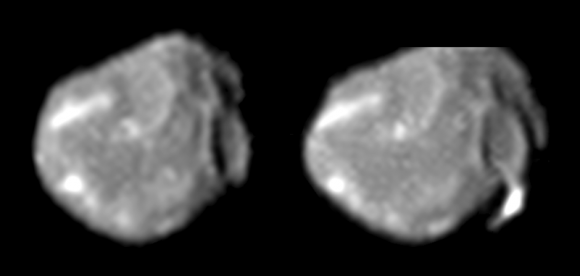
Those that are grouped into families are all named after their largest member. For example, the Himalia group is named after Himalia – a satellite with a mean radius of 85 km, making it the fifth largest moon orbiting Jupiter. It is believed that Himalia was once an asteroid that was captured by Jupiter’s gravity, which then experienced a impact that formed the moons of Leda, Lysithea, and Elara. These moons all have prograde orbits, meaning they orbit in the same direction as Jupiter’s rotation.
The Carme group takes its name from the Moon of the same name. With a mean radius of 23 km, Carme is the largest member of a family of Jovian satellites which have similar orbits and appearance (uniformly red), and are therefore thought to have a common origin. The satellites in this family all have retrograde orbits, meaning they orbit Jupiter in the opposite direction of its rotation.
The Ananke group is named after its largest satellite, which has a mean radius of 14 km. It is believed that Ananke was also an asteroid that was captured by Jupiter’s gravity and then suffered a collision which broke off a number of pieces. Those pieces became the other 15 moons in the Ananke group, all of which have retrograde orbits and appear gray in color.
The Pasiphae group is a very diverse group which ranges in color from red to grey – signifying the possibility of it being the result of multiple collisions. Named after Paisphae, which has a mean radius of 30 km, these satellites are retrograde, and are also believed to be the result of an asteroid that was captured by Jupiter and fragmented due to a series of collisions.
There are also several irregular satellites that are not part of any particular family. These include Themisto and Carpo, the innermost and outermost irregular moons, both of which have prograde orbits. S/2003 J 12 and S/2011 J 1 are the innermost of the retrograde moons, while S/2003 J 2 is the outermost moon of Jupiter.
Structure and Composition:
As a rule, the mean density of Jupiter’s moons decrease with their distance from the planet. Callisto, the least dense of the four, has an intermediate density between ice and rock, whereas Io has a density that indicates its made of rock and iron. Callisto’s surface also has a heavily cratered ice surface, and the way it rotates indicates that its density is equally distributed.
This suggests that Callisto has no rocky or metallic core, but consists of a homogeneous mix of ice and rock. The rotation of the three inner moons, in contrast, indicates differentiation between a core of denser matter (such as silicates, rock and metals) and a mantle of lighter material (water ice).

The distance from Jupiter also accords with significant alterations in the surface structure of its moons. Ganymede reveals past tectonic movement of the ice surface, which would mean that the subsurface layers underwent partial melting at once time. Europa reveals more dynamic and recent movement of this nature, suggesting a thinner ice crust. Finally, Io, the innermost moon, has a sulfur surface, active volcanism, and no sign of ice.
All this evidence suggests that the nearer a moon is to Jupiter, the hotter its interior – with models suggesting that the level of tidal heating is in inverse proportion to the square of their distance from the planet. It is believed that all of Jupiter’s moons may have once had an internal composition similar to that of modern-day Callisto, while the rest changed over time as a result of tidal heating caused by Jupiter’s gravitational field.
What this means is that for all of Jupiter’s moons, except Callisto, their interior ice melted, allowing rock and iron to sink to the interior and water to cover the surface. In Ganymede, a thick and solid ice crust then formed while in warmer Europa, a thinner more easily broken crust formed. On Io, the closest planet to Jupiter, the heating was so extreme that all the rock melted and the water boiled out into space.
Jupiter, a gas giant of immense proportions, was appropriately named after the king of the Roman pantheon. It is only befitting that such a planet has many, many moons orbiting it. Given the discovery process, and how long it has taken us, it would not be surprising if there are more satellites around Jupiter just waiting to be discovered. Sixty-seven and counting!
Universe Today has articles on Jupiter’s largest moon and Jupiter moons.
You should also check out Jupiter’s moons and rings and Jupiter’s largest moons.
For more information, try Jupiter’s moons and Jupiter.
Astronomy Cast also has an episode on Jupiter’s moons.
Moons of Jupiter
Jupiter has four large moons which were discovered by Galileo in 1610 using a 20-power telescope. These moons are known as the Galilean moons and they are called Io, Europa, Ganymede and Callisto. Jupiter also has dozens of other smaller moons that are thought to have originated from passing asteroids. So how many moons does Jupiter have? At the current count there are 67 confirmed moons of Jupiter.
The groups of Jupiter’s moons
Jupiter’s moons are often split into three specific groups:
Inner moons
These are the moons which orbit closest to Jupiter and they are sometimes known as the Amalthea group. The names of the inner moons of Jupiter are Metis, Adrastea, Amalthea, and Thebe.
Galilean moons
The largest four moons of Jupiter – Io, Europa, Ganymede and Callisto – were discovered by Galileo in 1610 and are known as the Galilean moons. They each have a radii larger than any of the dwarf planets and they are some of the largest objects in the solar system outside of the eight planets by mass. Ganymede is actually larger than Mercury in diameter.
Outer moons
The other moons are known as irregular satellites because of their eccentric and distant orbit paths. They are the furthest from Jupiter and are substantially smaller objects. Many of these moons are captured asteroids pulled in by the gravitational forces of Jupiter.
Facts about the inner moons of Jupiter
Metis
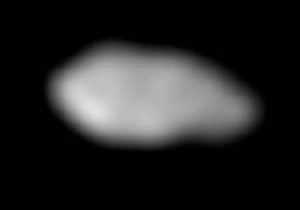
Discovered by Stephen Synnott through images taken by the Voyager 1 in 1979, Metis is the closest moon to Jupiter. It has a diameter of 40 km (25 miles) and orbits Jupiter in 0.294780 Earth days, which is faster than Jupiter rotates on its axis.
It is named after the Greek Titaness Metis, who was the first wife of the god of the skies, Zeus. It is thought that Metis is an asteroid that was captured by Jupiter’s gravity. The moon orbits at 128,000 km (79,500 miles) from Jupiter and has a mass of 9 x 10 16 kg.
Adrastea
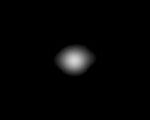
The second closest moon to Jupiter is Adrastea which has a diameter of 20 km (12 miles)12 miles (20 km) and orbits 129,000 km (80,000 miles) from Jupiter. It was discovered in 1979 by David Jewitt using the Voyager 2 and is named for the Greek goddess Adrasteia, who passed out rewards and punishments.
Adrastea has a mass of 1.91 x 10 16 kg and like Metis it orbits Jupiter faster than it takes for Jupiter to rotate on its axis – in 0.29826 Earth days.
Amalthea
Amalthea is the third moon from Jupiter and is the reddest object in the solar system. It was discovered by Edward Emerson Barnard in 1892. Amalthea is not a spherical moon with a diameter of 232 x 146 x 134 km (145 x 91 x 83 miles). It orbits 181,300 km (112,700 miles) from Jupiter, located in the faint Gossamer ring.
The moon is named for Amalthea in Greek mythology, who was the foster-mother of Zeus and nursed the god of the skies when he was a baby with goats milk. It is the largest of the inner moons of Jupiter and is most likely an asteroid captured by Jupiter. It takes Amalthea 0.49817905 Earth days to orbit Jupiter and like all the inner moons, it is tidally locked to the planet – the same side of the moon always faces Jupiter. Amalthea also gives off more heat than it receives from the Sun.
Thebe

The fourth moon from Jupiter is Thebe. It has a diameter of 110 x 90 km (68 x 56 miles) and orbits 222,000 km (138,000 miles) from Jupiter. Thebe was discovered by Stephen P. Synnott in 1979 and officially named in 1983.
In Greek mythology, Thebe was a nymph and the daughter of the river god Asopus. It is likely that Thebe, along with Amalthea, provide the dust for the Gossamer ring where they are located. Thebe has a mass of 8 x 10 17 kg and it takes the moon 0.6745 day Earth days to orbit Jupiter.
Facts about the Galilean moons of Jupiter
Io is a large, rocky and volcanically active moon which is very vivid with bright colors due to the molten sulfur that they volcanoes spit out. These violent conditions mean that it is not the kind of world which would be able to sustain human life. In fact, Io lies in the doughnut-shaped plasma cloud around Jupiter, known as the “Io plasma torus” which is the result of Jupiter’s very strong magnetic field.
As Io rotates, this torus strips ions from Io as it rotates, effectively making it an electrical reactor. The result is a level of radiation on Io that is 1000x stronger than the level needed to kill a human being.
With a diameter of 3,636 km (1,942 miles), Io is very close in size to our Moon and it is around 422,000 km (220,000 miles) from Jupiter. Io has a mass of 8.93×10 22 kg and takes 1.77 Earth days to orbit Jupiter.
Europa
Europa is a large, dense and icy moon of Jupiter with a very smooth surface – it is the smoothest object in our solar system. The surface of Europa is covered with long, crisscrossing trackway but it has few craters. Around 3.8 to 4.1 billion years ago, many objects in the solar system were bombarded with asteroids and comets – a period known as the Late Heavy Bombardment Period. Since Europa is so smooth, it is believed that the moon, like Earth, has been able to recover its surface.
One scientific theory is that Europa contains a large liquid water ocean heated by its corde beneath the frozen icy shell – making it a world that may be able to sustain human life.
Europa has a diameter less than 3,138 km (2,000 miles) making it smaller than the Earth’s moon. Europa orbits Jupiter in 3.55 days, sits at a mean distance of 670,900 km (420,000 miles) from Jupiter and has a mass of 4.80×10 22 kg.
Ganymede
The largest moon of Jupiter is Ganymede – a large, icy moon with a diameter of around 5,268 km (3,400 miles) that is scarred with craters. It is larger in diameter than the planet Mercury and the dwarf planet Pluto. In fact, Ganymede is the largest moon in the solar system.
Named for the handsome Trojan boy that Zeus took away to be the cup bearer for the gods, Ganymede has a magnetic field and is believed to have a molten iron core. It takes the moon 7.15 earth days to orbit Jupiter. Ganymede’s mass is 1.48×10 23 kg and it orbits Jupiter at a distance of around 1,070,000 km (664,000 miles).
Callisto
Callisto is the eighth moon of Jupiter and is a large, dark but low-density moon which is covered with impact craters. It is home to the Valhalla crater, which is nearly 4,000 km in diameter and the largest crater in the solar system. It is the outermost of the Galilean moons, orbiting 1,883,000 km (1,170,000 miles) from Jupiter.
It takes Callisto 16.7 days to complete its orbit around Jupiter and during that time it will have travelled more than seven million miles. Callisto has about 99% the diameter of the planet Mercury, but has only 1/3 the mass at 1.08×10 23 kg.
Facts about the outer moons of Jupiter
Leda is the ninth moon from Jupiter and is also the smallest moon with a mean diameter of 16 km (9.9 miles). Charles Kowal discovered Leda in 1974. It is named for the queen of Sparta and the mother of Pollux and Helen of Troy – the father was Zeus. The moon has a mass of 5.68 x 10 15 kg. It takes 238.72 Earth days for Leda to orbit Jupiter and it orbits at a distance of 11,094,000 km (6,900,000 miles) from the planet.
Himalia
Jupiter’s tenth moon is Himalia, discovered by Charles Perrine in 1904. Himalia is 170 km (110 miles) in diameter and orbits 11,480,000 km (7,000,000 miles) from Jupiter. The moon is named after a nymph who produced three sons with Zeus (Jupiter). It has a mass of 9.5 x 10 18 kg and takes 250.5662 days to orbit Jupiter.
Lysithea
The eleventh moon from Jupiter’s surface is Lysithea, a world which is 24 km (15 miles) in diameter and orbits at around 11,720,000 km (7,200,000 miles) from Jupiter. It has a mass of 8 x 10 16 kg and takes 259.22 Earth days to orbit Jupiter. Lysithea is named after the daughter of Oceanus in Greek mythology. Lysithea was discovered in 1938 by Seth Nicholson.
Elara
Elara was discovered in 1905 by Charles Perinne and is Jupiter’s twelfth moon. It has a diameter of 80 km (50 miles) and orbits Jupiter at a distance of 11,737,000 km (7,250,000 miles. Elara has a mass of 8 x 10 17 kg and takes 259.6528 Earth days to orbit Jupiter. It is named after Elara from Greek mythology, the mother of the giant Tityus, fathered by Zeus.
Ananke
Ananke, Jupiter’s thirteenth moon, was discovered in 1951 by Seth Nicholson. Ananke has a diameter of 20 km (12.5 miles) and orbits 21,200,000 km (13,100,000 miles) from Jupiter. The moon has a mass of 4 x 10 16 kg and it take Ananke 631 Earth days to orbit Jupiter. The moon is also in a retrograde orbit – which means it orbits in the opposite direction of Jupiter. It is named after Ananke, the mother of Adrastea by Zeus, in Greek mythology.
Carme
Discovered in 1938 by Charles Nicholson, Carme is the fourteenth moon of Jupiter. It has a diameter of 30 km (18.5 miles) and orbits at a distance of 22,600,000 km (13,800,000 miles) from Jupiter. Carme has a mass of 9 x 10 16 kg and orbits Jupiter in 692 Earth days. It is in a retrograde orbit which moves in the opposite direction of Jupiter. In Greek mythology Carme was the mother of Britomartis, a Cretan goddess, fathered by Zeus.
Pasiphae
Pasiphae is the fifteenth moon of Jupiter and was discovered by P. Melotte in 1908. It orbits Jupiter at a distance of 23,500,000 km (14,600,000 miles) and has a diameter of 36 km (22 miles). Its mass is 2 x 10 23 kg and it takes Pasiphae 735 Earth days to orbit Jupiter in a retrograde orbit path. In Greek mythology, Pasiphae was the wife of Minos and mother of the Minotaur.
Sinope
Jupiter’s sixteenth moon is Sinope, discovered in 1914 by Seth Nicholson. Sinope has a diameter of 28 km (17.5 miles) and it orbits Jupiter at a distance of 23,700,000 km (14,700,000 miles). It has a mass of 8 x 10 16 kg and it orbits Jupiter in a retrograde orbit that takes 758 Earth days. In Greek mythology, Sinope was a woman who was courted unsuccessfully by Zeus, and she remained a virgin for her entire life.
Callirrhoe
Jupiter’s seventeenth confirmed moon was Callirrhoe, also known as S/1999 J 1, and was discovered by Tim Spahr on July 18, 2000. It has a diameter of 8.6 km (5.3 miles) and orbits Jupiter at a distance of 24,100,000 km (14,975,000 miles). Callirrhoe has a mass of 9 × 10 14 kg and orbits Jupiter in a retrograde orbit that takes 758.77 Earth days to complete. In Greek mythology, Callirrhoe was the daughter of the river god Achelous, one of Zeus’ (Jupiter’s) many conquests.
Link/cite this page
If you use any of the content on this page in your own work, please use the code below to cite this page as the source of the content.
